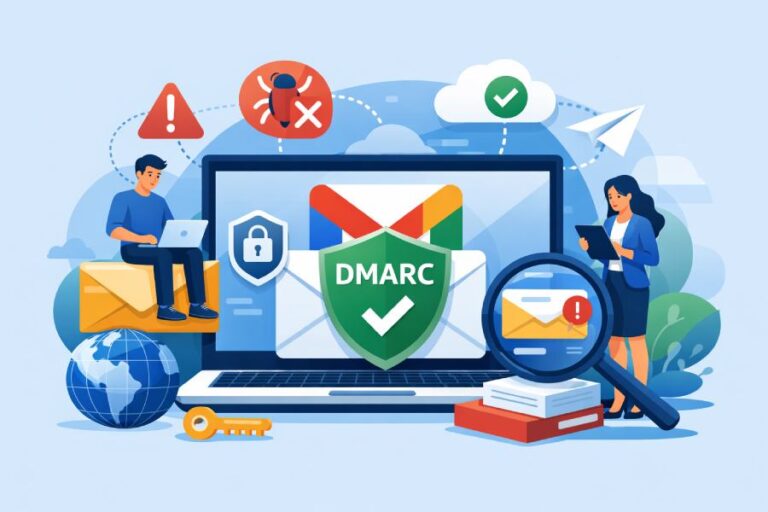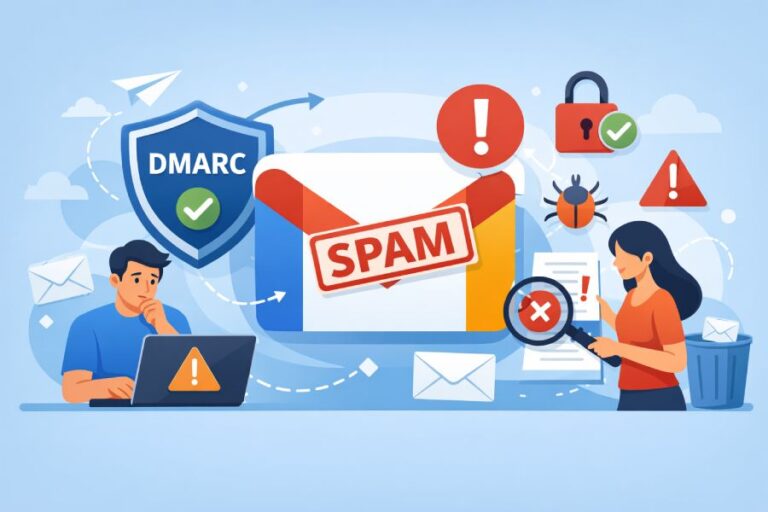How can I set up DMARC for my Google Workspace domain without breaking delivery?
To set up DMARC for your Google Workspace domain without breaking delivery, publish SPF (v=spf1 include:_spf.google.com ~all), generate and enable 2048‑bit DKIM in the Google Admin console, start with DMARC at p=none with rua/ruf to DMARCReport for monitoring, fix and align all third‑party senders via DKIM or aligned SPF, then progressively move to quarantine and…










